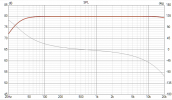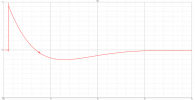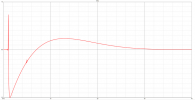Already in the last thread you were recommended to read some standard literature. Especially "Lautsprecher-Messtechnik" by J. D'Appolito or the English original "Testing Loudspeakers". There the interrelations of impulse response and step response, impulse response and FR/Phase response are described.I find only a explanation how to interpret the step response in german from a audio magazine in their lexikon.
The statements on the website are partially incorrect or misleadingly formulated:
Even an ideal full-range loudspeaker (with realistic low and high end) must fall below the zero line, since the mean value of the sound pressure must always be zero in a step response curve.Breakouts downwards (below the zero line) indicate phase errors.


The use of a crossover for example in a 2-way speaker causes further "peaks".
Is it possible that your measurements do not use a gate again? (please read in REW how to do this, after all these months this should be possible)then it is also worse that the Kali have much below the zereo line and so worse phase. The JBL is much better . that the first peak from the JBL is
much higher as the second peak from the woofer/mid show that the JBL have much high boost.
The step response shows among other things the excess phase ("time delay") caused by the crossover (allpass) filter - which causes the time staggered peaks.
Just because the step response is below the zero line does not mean that the phase shift (calling it a phase error is somewhat misleading, since it is a direct result of the filter function) is particularly "bad" as a result - i.e. the "time delay" is particularly high.
Here is the step response of a second order filter, which causes only a small "time delay" (better said group delay). First positive peak is the tweeter, the negative peak is the woofer.

So, no the phase is not particularly "bad" in this example because the step response is below the zero line. The opposite is the case, because the phase shift around the crossover frequency is only 180°.
Here is an example of a 2-way loudspeaker, once with almost perfect LR4@1000Hz crossover frequency and a second one with poor phase alignment around the crossover frequency.


So the "worst phase" has the loudspeaker with the smallest "peak" below the zero line.
